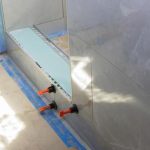Federal home improvement grants can provide a significant financial boost to homeowners looking to make necessary repairs or enhancements to their properties. Whether you need to fix a leaky roof, upgrade your aging HVAC system, or make your home more energy-efficient, these grants can help make your dreams a reality. In this article, we will guide you through the process of applying for federal home improvement grants.
Owning a home is not just a source of pride but also a responsibility. Over time, homes require maintenance and improvements to ensure they remain safe, comfortable, and in good condition. However, the cost of such projects can be overwhelming for many homeowners. That’s where federal home improvement grants come into play. These grants are designed to alleviate the financial burden associated with making essential improvements and updates.
By accessing federal grant programs specifically created for homeowners like yourself, you can receive funds that do not have to be repaid. This means you can tackle major projects without dipping into your savings or taking on high-interest loans. Additionally, these grants often come with flexible eligibility criteria and application processes, making them accessible options for a wide range of individuals and families.
In the sections that follow, we will delve into the different types of federal home improvement grants available and explain who is eligible to apply for them. We will discuss how to research and identify grant programs that suit your specific needs, as well as provide tips and best practices for preparing a successful application. Furthermore, we will outline what to expect during the waiting period after submitting an application and highlight common mistakes that applicants should avoid.
If you’re ready to enhance your living space and improve your property value while minimizing out-of-pocket expenses, continue reading our complete guide on how to apply for federal home improvement grants. With the right knowledge and preparation, you can take advantage of these valuable resources and turn your dreams of a better home into reality.
Understanding the Different Types of Federal Home Improvement Grants Available
When it comes to federal home improvement grants, there are various types available to assist homeowners in financing their renovation projects. Understanding the different options can help you determine which grant is best suited for your needs. Here, we will explore some of the most common types of federal home improvement grants available:
- Block Grants: These grants are provided by the U.S. Department of Housing and Urban Development (HUD) to state and local governments. The funds are then distributed to eligible homeowners through programs designed to address specific community needs, such as improving energy efficiency or providing accessibility modifications for individuals with disabilities.
- Weatherization Assistance Program: This program aims to reduce energy costs for low-income households by making homes more energy-efficient. Eligible homeowners can receive assistance in areas such as insulation, weatherstripping, and energy-saving appliances.
- Rural Housing Repair Loans and Grants: Managed by the U.S. Department of Agriculture (USDA), this program offers loans and grants to low-income homeowners in rural areas for repairs and improvements that are necessary for health and safety reasons.
- HUD Title I Property Improvement Loans: These loans provide financial assistance to homeowners who want to rehabilitate or improve their properties but may not have sufficient equity or meet traditional lending criteria.
Other Federal Grant Programs
In addition to these common types, there are also other federal grant programs that may be available depending on your specific circumstances:
- Community Development Block Grants (CDBG): Administered by HUD, CDBG grants support a wide range of community development activities, including housing rehabilitation.
- Native American Housing Improvement Program: This program provides funding for tribes or tribally designated housing entities to build or renovate homes on tribal lands.
- Veterans Affairs Adapted Housing Grant Programs: These grant programs assist veterans with service-connected disabilities in adapting their homes to meet their unique accessibility needs.
- EnergyStar Rebate Programs: Although not federal grants, many states and utility companies offer rebates for energy-efficient home improvements. These programs can significantly reduce the cost of upgrades such as solar panels or high-efficiency HVAC systems.
Understanding the different types of federal home improvement grants available is crucial in finding the right funding source for your project. By exploring various programs, you can identify those that align with your needs and qualifications, increasing your chances of securing assistance to make necessary improvements to your home.
Eligibility Requirements
When it comes to applying for federal home improvement grants, it is crucial to understand the eligibility requirements. These requirements determine who can qualify for these grants and receive financial assistance for their home improvement projects. Here are the key factors that determine eligibility:
- Income limitations: Many federal home improvement grant programs have income limitations that applicants must meet in order to be eligible. These limitations vary depending on the program and are often based on the applicant’s household size and income level.
- Homeownership status: Typically, federal home improvement grants are available only to homeowners. Therefore, to be eligible for these grants, you must own the property where the improvements will be made. Renters or individuals living in public housing may not qualify for these grants.
- Property type: The type of property you own can also affect your eligibility for federal home improvement grants. In most cases, grants are available only for primary residences and not for vacation homes or investment properties.
- Home condition: Some grant programs prioritize applicants whose homes are in poor condition or have significant health and safety hazards. This means that if your home is in good condition or does not require immediate repairs, you may have a lower chance of receiving a grant.
To verify your eligibility and ensure that you meet all the requirements, it is important to carefully review each grant program’s guidelines and criteria. Often, this information can be found on the program’s official website or through contacting the relevant government agency managing the grant.
Additionally, it is worth noting that certain demographic groups may be given preference or targeted by specific federal home improvement grant programs. For example, there may be programs specifically designed for low-income households, seniors, veterans, or individuals with disabilities. Understanding these additional eligibility considerations can help you identify programs that align with your circumstances and increase your chances of success in obtaining a grant.
If you do not meet the eligibility requirements for federal home improvement grants, do not despair. There are alternative sources of funding and assistance available, such as loans, tax credits, utility programs, or local community organizations. Exploring these options can help you find the necessary support for your home improvement projects even if you do not qualify for federal grants.
Researching and Identifying Federal Home Improvement Grant Programs
Researching and identifying federal home improvement grant programs is an important step in the process of applying for these grants. It is crucial to find the right grant program that aligns with your specific needs and goals. This section will provide a detailed guide on how to effectively research and identify federal home improvement grant programs.
Start by assessing your needs
Before diving into research, it is important to assess your specific home improvement needs. Do you require repairs for structural issues, energy efficiency improvements, or accessibility modifications? Identifying your specific needs will narrow down the list of grant programs that you should be researching.
Consult government resources
One of the most reliable sources of information on federal home improvement grants is government websites. Visit websites such as Grants.gov, which provides a comprehensive database of federal grants available across various agencies. Additionally, check with your local housing authority or community development department as they may have information about regional or local grant programs.
Explore nonprofit organizations
Many nonprofit organizations offer assistance and resources for homeowners seeking home improvement grants. Organizations such as Habitat for Humanity, Rebuilding Together, and NeighborWorks America often have grant programs aimed at helping low-income individuals or communities in need. Research these organizations online or reach out to them directly to learn more about their grant opportunities.
Utilize online databases and search engines
There are several online databases and search engines dedicated to helping individuals find grants suited to their needs. Websites like GrantWatch.com, Foundation Directory Online, and GrantGopher allow users to search for specific types of grants, including those focused on home improvements. These platforms provide detailed information about each grant program, including eligibility criteria and application deadlines.
Network with professionals and experts
Another valuable strategy is networking with professionals in the field of home improvement or housing. Connect with contractors, architects, or real estate agents who may have knowledge of available grant programs. These individuals can provide insights and recommendations based on their experience working with homeowners.
By following these research strategies, you will be able to identify and select the federal home improvement grant programs that best match your needs. Thorough research is essential to ensure that you are applying for grants that are applicable to your specific situation, increasing your chances of success in securing funding for your home improvement projects.
Steps to Prepare for the Application Process
Preparing for the application process is an important step to ensure that you have everything in order when applying for federal home improvement grants. By following these steps, you can increase your chances of a successful application and secure the funding you need for your home improvement project.
- Determine Your Home Improvement Needs: Before applying for any grant program, it’s essential to assess and determine what specific home improvement needs you have. This could include repairs, renovations, energy-efficient upgrades, or accessibility modifications. By identifying your needs, you can narrow down the types of grants that are best suited for your project.
- Research Available Grants: Once you know what type of home improvement project you want to undertake, research the available grants that align with your needs. Take note of the eligibility requirements, application deadlines, and any additional documentation or information needed for each grant program. This research will help you identify which grants are most suitable and worth pursuing.
- Gather Required Documents: After identifying potential grant programs, gather all the necessary documents required for the application process. This may include proof of ownership or occupancy, income verification, estimates from contractors, property assessments, and other relevant documentation. Having these documents ready in advance will streamline the application process and prevent any delays or issues.
| Required Documents | Description |
|---|---|
| Proof of ownership or occupancy | Document proving that you own or occupy the property undergoing improvements. |
| Income verification | Documentation showing your income level to determine eligibility. |
| Estimates from contractors | Detailed estimates from licensed contractors outlining the scope and cost of the proposed improvements. |
| Property assessments | Assessments or inspections of the property to identify any necessary improvements. |
By following these steps, you can proactively prepare for the application process and increase your chances of securing a federal home improvement grant. Remember to thoroughly review the specific requirements and guidelines for each grant program you plan to apply for, as they may vary. With thorough preparation and attention to detail, you’ll be well on your way to obtaining the funding needed for your home improvement project.
Complete Guide on How to Apply for Federal Home Improvement Grants
Applying for federal home improvement grants can be a complex and lengthy process, but with the right guidance and understanding, it is absolutely achievable. This section aims to provide a complete guide on how to apply for these grants, ensuring that homeowners have all the information they need to navigate through the application process successfully.
The first step in applying for federal home improvement grants is to gather all necessary documentation and information. This includes proof of ownership of the property, income verification, copies of utility bills, estimates from contractors for the proposed improvements, and any other required documents specified by the grant program. It is important to thoroughly read through the application instructions to ensure that all requested materials are provided.
Once all the required documentation is gathered, the next step is to complete the application form accurately and completely. Pay close attention to details such as name spellings, address information, and project descriptions. Incomplete applications or those with errors may be rejected or delayed in processing.
After completing the application form, it is crucial to review it carefully before submission. Double-check all information provided and ensure that there are no mistakes or missing details. It may be helpful to have someone else review the application as well for an additional set of eyes before submission.
Finally, submit the completed application by the deadline specified by the grant program. Some programs require online submissions while others may require physical copies sent via mail or email. Whichever method is required, make sure to follow instructions precisely.
By following this complete guide on how to apply for federal home improvement grants, homeowners can increase their chances of securing funding for their much-needed renovations or repairs. Remember that patience is key during this process as waiting periods can vary depending on the program’s requirements.
Tips and Best Practices for a Successful Grant Application
Applying for federal home improvement grants can be a competitive process, as there are often limited funds available and many applicants vying for the same grants. To increase your chances of success, it’s important to follow some tips and best practices when preparing and submitting your grant application. Here are some key recommendations to help you create a strong application:
- Read the guidelines carefully: Before starting your application, thoroughly review the guidelines provided by the grant program. These guidelines will outline the specific requirements, eligibility criteria, and evaluation criteria that will be used to assess applications. Understanding these details will allow you to tailor your application to meet the program’s expectations.
- Start early and stay organized: Grant applications typically have deadlines, so it’s important to start the process well in advance. This will give you ample time to gather all the necessary documentation, complete any required trainings or certifications, and ensure that your application is comprehensive and well-prepared. Create a timeline or checklist to stay on track with all the necessary tasks.
- Clearly articulate your project goals: In your grant application, clearly state what you hope to achieve with the funding. Provide a detailed description of your project, including how it aligns with the mission and goals of the grant program. Clearly identify how the funds will be used and explain why your project is deserving of financial support.
- Show community impact: Many federal home improvement grants prioritize projects that have a positive impact on communities or underprivileged populations. When writing your application, emphasize how your project will benefit others in meaningful ways. This could include improving housing conditions for low-income families or revitalizing neighborhoods that have been neglected.
- Support your proposal with data: Using data and evidence to support your proposal adds credibility to your application. Include relevant statistics or research findings that demonstrate the need for your project and its potential outcomes. This can strengthen your argument for why funding should be awarded to you over other applicants.
By following these tips and best practices, you can increase your chances of success when applying for federal home improvement grants. Remember to be thorough, concise, and persuasive in your application, and carefully review it before submitting to ensure all requirements have been met. Good luck.
What to Expect After Submitting the Application
After you have successfully submitted your application for a federal home improvement grant, it is important to understand what comes next. This section will guide you through the waiting period and notification process that occurs after you have submitted your application.
Once your application has been received, it will go through a review process. During this time, the organization or agency responsible for administering the grant will evaluate your application to determine if you meet all the eligibility requirements and if your proposed project aligns with their funding priorities. This review process typically takes several weeks or even months, depending on the volume of applications and the complexity of the program.
During the waiting period, it is important to be patient and avoid contacting the granting agency too frequently for updates. While it is understandable to want to know the status of your application, excessive inquiries can be seen as a nuisance and may even result in a delay in processing.
Once a decision has been made regarding your application, you will receive a notification from the granting agency. This notification can come in various forms such as an email, letter, or phone call. It is important to read this notification carefully as it will inform you whether your application has been approved or denied. If approved, it will provide instructions on how to proceed with receiving funds and implementing your home improvement project.
In some cases, if there are more eligible applicants for a particular grant than there are funds available, there may be a waiting list established. If this happens with your application, you may receive notice that you have been placed on a waiting list and will need to wait until additional funding becomes available before receiving confirmation of approval.
Overall, it is crucial to remain patient during the waiting period after submitting your application for a federal home improvement grant. The review process takes time, and it is essential to refrain from excessive follow-ups while still being attentive to any notifications you receive regarding your application status.
Common Mistakes to Avoid When Applying for Federal Home Improvement Grants
When applying for federal home improvement grants, it is important to be aware of common mistakes that can hinder the success of your application. By avoiding these mistakes, you can increase your chances of securing the funding you need for your home improvement project.
One common mistake to avoid is failing to thoroughly read and understand the grant requirements and guidelines. Each grant program will have specific eligibility criteria, project requirements, and application instructions. It is crucial to carefully review all of these details before starting the application process. Failure to meet the requirements or follow the instructions could result in immediate disqualification.
Another mistake to avoid is submitting an incomplete or poorly organized application. Make sure all required documents are included and that they are filled out accurately and completely. Double-check that all necessary signatures and supporting materials are included as well. Additionally, take the time to organize your application in a logical manner so that reviewers can easily navigate through it.
Furthermore, it is important to avoid waiting until the last minute to submit your application. Many grant programs have deadlines, and submitting close to the deadline increases the risk of encountering technical issues or other unexpected hurdles that could prevent your application from being submitted on time. Start working on your application as early as possible to ensure a smooth submission process.
By avoiding these common mistakes, you can maximize your chances of successfully applying for federal home improvement grants. This will increase the likelihood of obtaining funding for your project and ultimately achieving your desired improvements for your home.
Additional Resources and Websites to Explore for Home Improvement Grant Opportunities
In conclusion, there are numerous additional resources and websites available for individuals looking to explore home improvement grant opportunities. These resources offer a wealth of information and can greatly assist applicants in finding the right grants and programs for their specific needs.
One important resource to consider is the official website of the U.S. Department of Housing and Urban Development (HUD). HUD offers comprehensive information on various housing-related grants, including home improvement grants. The website provides details on eligibility requirements, application processes, and a searchable database of available grants.
Another valuable resource is Grants.gov, which serves as a central repository for federal funding opportunities. This website allows users to search for grants by category, including home improvement grants. It also provides information on eligibility criteria, application deadlines, and submission guidelines.
Additionally, it may be beneficial to explore local resources such as nonprofit organizations, community development agencies, or your state’s housing finance agency. These entities often have their own grant programs or can provide guidance on available resources in your area.
Frequently Asked Questions
What is the Ohio Housing Assistance Grant Program?
The Ohio Housing Assistance Grant Program is a government initiative aimed at providing financial assistance to low-income individuals and families in Ohio who are struggling to afford their housing expenses. The program offers grants that can be used towards rent, mortgage payments, or utility bills, helping to alleviate the burden of housing costs on those who are most in need.
The grants are awarded based on income eligibility and priority is given to vulnerable populations, such as seniors, disabled individuals, and families with young children. By providing this assistance, the Ohio Housing Assistance Grant Program aims to ensure that all residents have access to safe and affordable housing.
Are there any programs to help pay for a new roof in Florida?
In Florida, there are several programs available to assist homeowners in paying for a new roof. One such program is the Weatherization Assistance Program (WAP) offered by the Florida Department of Economic Opportunity. This program provides free weatherization services to eligible low-income households, which may include roof repairs or replacements if deemed necessary for energy efficiency purposes.
Another option is the Community Development Block Grant (CDBG) program, which provides funding to local governments in Florida for various community development activities, including housing repairs and renovations. Additionally, some counties and municipalities may offer their own specific programs or grants aimed at assisting homeowners with roofing expenses.
What grants are available for home improvements in Ireland?
There are various grants available for home improvements in Ireland that aim to support homeowners in maintaining and improving the condition of their properties. One significant grant scheme is the Housing Adaptation Grant for People with a Disability provided by local authorities across Ireland. This grant assists individuals with disabilities in adapting their homes to meet their specific needs by funding modifications such as ramps, stairlifts, or accessible bathrooms.
Additionally, there is the Home Renovation Incentive (HRI) Scheme, which provides tax relief for homeowners undertaking qualifying renovations or repairs on their properties. Other potential sources of grants for home improvements in Ireland may include energy efficiency retrofitting schemes or specialized programs targeted towards certain demographics like older adults or low-income households. It is advisable to research and consult with local authorities or relevant government agencies to determine current grant opportunities available in Ireland.

I’m thrilled to have you here as a part of the Remodeling Top community. This is where my journey as an architect and remodeling enthusiast intersects with your passion for transforming houses into dream homes.





